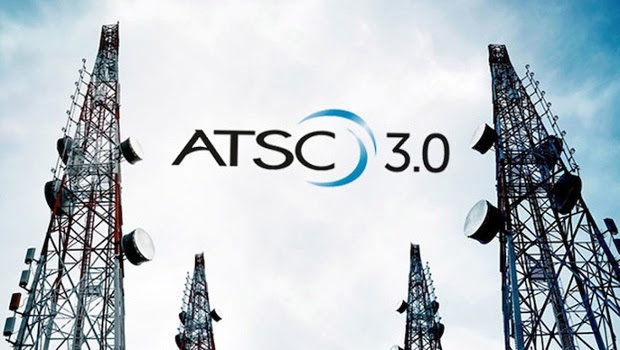HDR Could Help Drive Greater NextGen TV Uptake
A pair of ATSC 3.0 experts recently discussed the role of HDR in propelling NextGen TV

High dynamic range (HDR) is one of the key ATSC 3.0 capabilities that will drive growing uptake of NextGen TV, according to a pair of ATSC 3.0 leaders during a recent podcast for journalists.
“HDR is one of the features that most visibly improves the consumption of over-the-air (OTA) and over-the-top (OTT) content,” said Alan Stein, vice president of technology at InterDigital. “It greatly enhances the viewing experience, especially for things like live sports.”
Sinclair Broadcast Group, one of the largest station groups in the U.S. and owner of 21 regional sports networks as well as the Tennis Channel, this year offered HDR as part of its coverage of the U.S. Open tennis championship, said Mark Aitken, senior vice president of technology at Sinclair and president of ONE Media 3.0.
“The Tennis Channel, which is brought to consumers through the Bally Sports Regional Networks in 23 markets, will be using Advanced HDR by Technicolor for both our streaming and over-the-air broadcast services in 2022,” he said.
Use of HDR for U.S. Open coverage demonstrates that the competitive gap between over-the-air and streaming services is narrowing, said Stein.
With 3.0 being an IP-based standard, broadcasters now have a bridge leading to a greater presence in the fast evolving streaming market, he added.
“It is an important milestone. We're now seeing broadcast apps that embrace and extend the best ideas from OTT services while still having the scale and channel change speed that consumers like about traditional television. This allows broadcasters to play to their strengths, highlighting the absence of latency and unreliability that you sometimes get with some streaming applications and devices,” he said.
Get the TV Tech Newsletter
The professional video industry's #1 source for news, trends and product and tech information. Sign up below.
Advanced HDR by Technicolor enables a standard dynamic range (SDR) and an HDR signal to be delivered in one bitstream at the same time, which makes it possible for broadcasters to sidestep using two channels to deliver HDR and SDR services to viewers to support those with legacy TVs and new models with HDR capability.
The technology also offers advantages on the distribution side, enabling broadcasters to integrate HDR camera sources with SDR cameras into a single workflow that automatically adjusts the capabilities of the receiving devices, regardless of whether they are HDR- or SDR-capable.
“If you've got a television set that was manufactured in the last three years, and it's 4K HDR-capable, you can connect your gateway or set-top box, and you've got glorious eye-popping HDR television. It also maximizes the experience of SDR-only devices. Either way, we want people to see the difference,” said Aitken.
To date, 3.0 deployment and consumer uptake have been strong. By year’s end, Aitken expects half the country will have access to at least one ATSC 3.0 signal—a feat accomplished during a time when the pandemic interfered with planned deployments.
Further, the Consumer Technology Association has increased its estimate for sales of 3.0-capable sets in 2021 from 800,000 to more than 2 million, which taken together with continued deployment bode well for the future.
“ATSC 3.0 can deliver more pixels at higher quality for ultra high definition (UHD), 4K and HDR screens. This is a significant upgrade for customers with large screens,” said Stein.
More information about Advanced HDR by Technicolor is available online.
Phil Kurz is a contributing editor to TV Tech. He has written about TV and video technology for more than 30 years and served as editor of three leading industry magazines. He earned a Bachelor of Journalism and a Master’s Degree in Journalism from the University of Missouri-Columbia School of Journalism.

